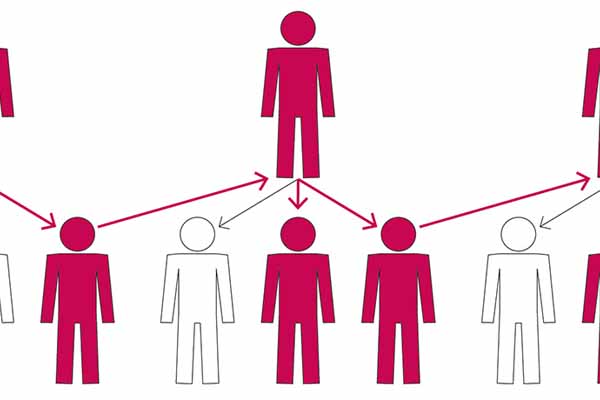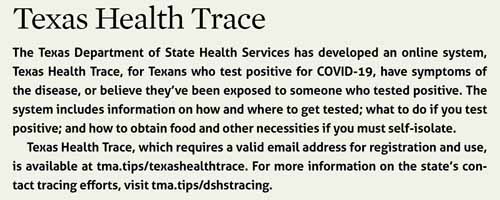
As most of the nation quickly found out once coronavirus took hold, staying home nearly around the clock can be disconnecting, disheartening, and tough on the psyche.
But some people’s objections to self-quarantine go well beyond, “But it’s going to be so boring.”
Wendy Chung, MD, chief epidemiologist for the Dallas County Department of Health and Human Services, says the department has heard understandable concerns and poignant stories from patients.
“Oftentimes, the resistance to quarantine and isolation has to do with very real social needs: A fear of losing their job, not being able to pay the rent, or not having a place to stay where they can safely self-isolate. That’s what we encounter,” she said.
Umair Shah, MD, executive director of Harris County Public Health, says his department runs into similar cases. The good news, he says, is that so far it hasn’t been often.
As the state ramps up “contact tracing” as a key part of Gov. Greg Abbott’s plan to stop the spread of COVID-19 and return Texas to economic normalcy, some health officials say physicians can help those for whom quarantine and isolation are a challenge.
“What we are really doing is we’re talking to somebody who may be on a bus, their second bus for the day. And out of the blue … we’re telling them, ‘Hey, you tested positive.’ Or in the situation of a contact, we may be saying, ‘Hey, you may have been exposed to somebody who was positive.’ And that person may have just lost a job,” Dr. Shah said.
To help with quarantine concerns, Dr. Chung says mechanisms for physicians to more easily refer patients and their families to social support resources would be ideal.
Unmet needs
Contact tracing involves identifying people at high risk of getting COVID-19 because of their contact with an infected person; notifying those people of their exposure; and, as they quarantine, monitoring them daily for symptoms for 14 days since their last exposure. (See “Texas Health Trace,” page 33.)
Once a tracer contacts someone who has tested positive for the virus or is suspected of having it, the tracer may make a referral for medical treatment or testing. Tracers also ask the person about their close contacts and then reach out to those people.
A “close contact,” as defined by the Centers for Disease Control and Prevention, is someone who was within 6 feet of the person for at least 15 minutes within at least two days of a positive test or the onset of illness.
According to Dr. Chung, some patients or their close contacts have reservations about quarantine and isolation. Some may fear that when they get out of quarantine, their job will be in someone else’s hands. Others may have a family member who requires their care – either in their home or elsewhere.
Contact tracers keep tabs on those contacts with texts and calls throughout their 14-day isolation period. But Dr. Chung says important questions remain.
“What [happens] next to the person you are calling who may not have a way to get food delivered?” she asked. “What [happens] next to the COVID-19 patient or contact who has a one-bedroom residence and has a mother undergoing chemotherapy, and has no alternative to safely self-quarantine? They can’t move out, and neither can the mother.”
Dr. Chung says the need for social services and housing options to support people in those situations is “enormous.”
Physicians who diagnose or treat those contacts could be a referral source for those resources. Dr. Chung envisions a resource center to which physicians can direct those patients.
“Patients have often been referred to call 2-1-1,’” Dr. Chung said, referring to the state’s regional and local call centers that inform callers about resources that include help for mental health, disabilities, and assistance if they can’t pay bills. “But 2-1-1 can become overloaded with calls, and in some cases what is really needed is a good case manager or a social worker.”
“A very important connection”
The Texas Department of State Health Services (DSHS) told Texas Medicine in a statement that through its contract tracing and case investigation interviews, the department asks people about needs they foresee having in isolation.
“If they indicate a need, someone from the public health region in which they are located will follow up with them to find out what their needs are and then connect them to community resources to help, such as access to food, medication, mental health (care) and other kinds of assistance,” DSHS said.
The department added that its social services division in each public health region provides follow-up support for contacts.
“To help with this effort, we’re in the process of hiring staff, all of which have backgrounds in either public health, social services, or case management. Lastly, DSHS has also contracted with multiple hotels across the state for those who don’t have a safe place to isolate or have some other extenuating circumstances,” the agency said, adding that it planned to make this resource available in early July.
In mid-May, as part of an announcement of the state’s containment plan for a COVID-19 outbreak in Amarillo, Governor Abbott announced that area hotels were available to those who couldn’t otherwise isolate. Austin city leaders also made hotel rooms available early in the pandemic.
For more information on the state’s contact tracing efforts, visit tma.tips/dshstracing.

Across the state, Dr. Shah says, local health departments are doing their part to connect patients to social services. But those connections “are always very difficult because every individual has an individual circumstance that’s very unique,” he said. “In other words, one size does not fit all.
“I’m glad to hear what DSHS is saying. I will say that there are opportunities to do a better job with that. That is obviously a very important connection that must happen.”
Tex Med. 2020;116(8):32-33
August 2020 Texas Medicine Contents
Texas Medicine Main Page